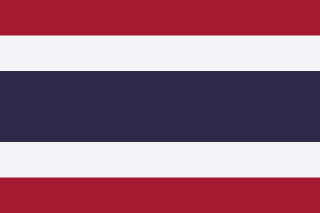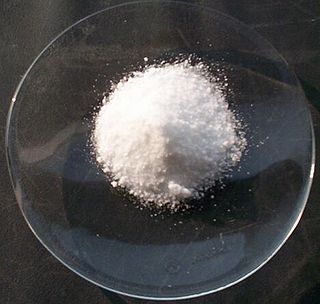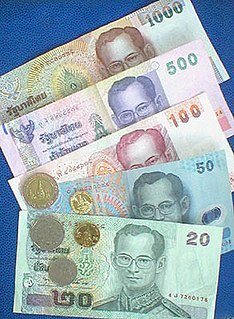
Khon Kaen is the fifth-largest of the northeastern provinces (changwat) of Thailand. Neighboring provinces are Nong Bua Lamphu, Udon Thani, Kalasin, Maha Sarakham, Buriram, Nakhon Ratchasima, Chaiyaphum, Phetchabun, and Loei.

Nong Bua Lamphu is one of the northeastern provinces (changwat) of Thailand. Neighbouring provinces are Udon Thani, Khon Kaen, and Loei.
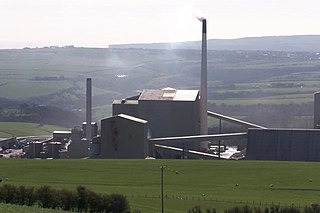
Boulby Mine is a 200-hectare (490-acre) site located just south-east of the village of Boulby, on the north-east coast of the North York Moors in Redcar and Cleveland, England. It is run by Cleveland Potash Limited, which is now a subsidiary of Israel Chemicals Ltd.

Mueang Udon Thani ) is the capital district of Udon Thani Province, northeastern Thailand.

Ban Dung is a district (amphoe) in northeastern Udon Thani Province, Isan, Thailand.

Nong Han is a district (amphoe) of Udon Thani Province, northeastern Thailand.

Fao Rai is a district (amphoe) of Nong Khai Province, northeastern Thailand.

Phon Phisai is a district (amphoe) in Nong Khai Province, northeastern Thailand.

Prachaksinlapakhom is a district (amphoe) in central Udon Thani Province, northeastern Thailand.

Nong Saeng is a district (amphoe) of Udon Thani Province, northeastern Thailand.

Kumphawapi is a district (amphoe) in the southern part of Udon Thani Province, northeastern Thailand.

Wanon Niwat is a district (amphoe) in the northern part of Sakon Nakhon Province, northeast Thailand.

Mining in New Zealand began when the Māori quarried rock such as argillite in times prior to European colonisation. Mining by Europeans began in the latter half of the 19th century.

Mining in the United Kingdom produces a wide variety of fossil fuels, metals, and industrial minerals due to its complex geology. In 2013, there were over 2,000 active mines, quarries, and offshore drilling sites on the continental land mass of the United Kingdom producing £34bn of minerals and employing 36,000 people.

The Aurora mine is the largest integrated phosphate mining and chemical plant in the world. The mine is located in Richland Township, in Aurora in Beaufort County, North Carolina. The mine which is owned since 1995 by PotashCorp, the world's largest potash producer and the second and third largest producer of nitrogen and phosphate, has an annual production capacity of over six million tonnes of phosphate ore. In 2008 the mine produced 6.6 million tonnes of phosphate ore from which 1.3 million tonnes of phosphoric acid was produced.
Mining in North Korea is important to the country's economy. North Korea is naturally abundant in metals such as magnesite, zinc, tungsten, and iron; with magnesite resources of 6 billion tonnes, particularly in the Hamgyeong-do and Jagang-do provinces. However, often these cannot be mined due to the acute shortage of electricity in the country, as well as the lack of proper tools to mine these materials and an antiquated industrial base. Coal, iron ore, limestone, and magnesite deposits are larger than other mineral commodities. Mining joint ventures with other countries include China, Canada, Egypt, and South Korea.
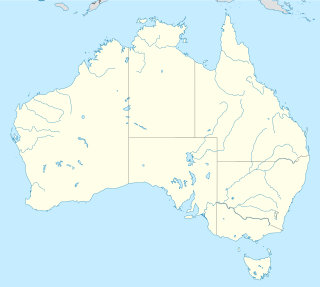
The Carrapateena mine is a large copper mine under development 100 km southeast of Olympic Dam in South Australia's Far North region. Carrapateena represents one of the largest copper reserves in Australia and in the world having estimated reserves of 292 million tonnes of ore grading 1.31% copper and 3.64 million oz of gold. It was discovered by explorer and metallurgist Rudie Gomez in 2005. The project was acquired by OZ Minerals in 2011, and the project was referred to the EPBC Act for Federal environmental approval in 2012. As of 2016 the project is at pre-feasibility stage, with construction of a decline underway. The mining technique expected to be used to extract the ore is sub-level caving.
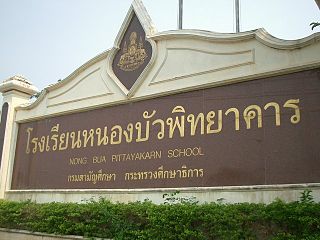
Nong Bua Pittayakarn School is a Nongbua Lamphu Province Special secondary school in Thailand. Nong Bua Pittayakarn School is located in Udon Thani-Loei Strategic Road, Nong Bua Lamphu Municipality, Mueang District, Nong Bua Lamphu. The Department of General Education in the Ministry of Education is located in the city. It is in the Buaban campus. Under the Office of the Secondary Educational Service Area Office 19.

